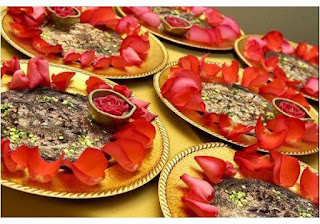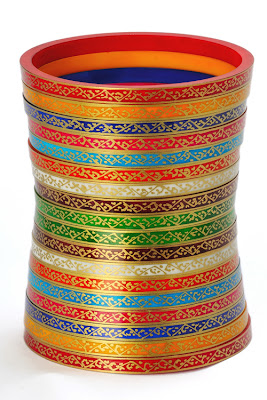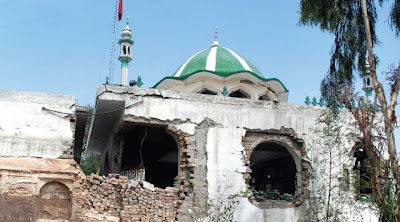Culture may be defined as behaviour peculiar to human beings, together with material objects used. Culture consists of language, ideas, beliefs, customs, codes, institution, tools, techniques, works of arts, ceremonies and so on.culture of Pakistan comprises numerous diverse cultures and ethnic groups: the Punjabis, Kashmiris, Sindhis in east, Muhajirs, Makrani in the south; Baloch and Pashtun in the west; and the ancient Dardic, Wakhi, and Burusho communities in the north. These Pakistani cultures have been greatly influenced by many of the surrounding countries' cultures, such as the Turkic peoples, Persian, Arab, and other South Asian ethnic groups of the Subcontinent, Central Asia and the Middle East.
Language in Pakistan
Urdu is the only official language of Pakistan. Although English is generally used instead of Urdu in this regard. English is the lingua franca of the Pakistani elite and most of the government ministries.
Urdu is closely related to Hindi but is written in an extended Arabic alphabet rather than in Devanagari. Urdu also has more loans from Arabic and Persian than Hindi has.
Many other languages are spoken in Pakistan, including Punjabi, Siraiki, Sindhi, Pashtu, Balochi, Hindko, Brahui, Burushaski, Balti, Khawar, Gujrati and other languages with smaller numbers of speakers.
Pakistani Clothes
Salwar kameez is a popular dress of Pakistan. It is worn by both men and women. The mostly useful materials are silk, cotton, crepe, chiffon and a few more types. Mostly bright colors are used along with rich and delicate work in the clothing.
Pakistan Clothes represent the choice of Pakistan Culture and People. The loud colors in clothing make them more rich and vibrant. The delicate materials like net and chiffon are meant for the exotic outfits. For women outfits for special occasions include lehenga mainly. Embroideries comprise of resham work, cut work, beeds work, dakba work, stitch work and a lot more.
Pakistani Society andCulture
Islam
Islam is practised by the majority of Pakistanis and governs their personal, political, economic and legal lives.
Among certain obligations for Muslims are to pray five times a day - at dawn, noon, afternoon, sunset, and evening.
Friday is the Muslim holy day. Everything is closed.
During the holy month of Ramadan all Muslims must fast from dawn to dusk and are only permitted to work six hours per day. Fasting includes no eating, drinking, cigarette smoking, or gum chewing.
The Family
The extended family is the basis of the social structure and individual identity.
It includes the nuclear family, immediate relatives, distant relatives, tribe members, friends, and neighbours.
Loyalty to the family comes before other social relationships, even business.
Nepotism is viewed positively, since it guarantees hiring people who can be trusted, which is crucial in a country where working with people one knows and trusts is of primary importance.
The family is more private than in many other cultures.
Female relatives are protected from outside influences. It is considered inappropriate to ask questions about a Pakistani's wife or other female relatives.
Architecture
The architecture of Pakistan is assorted in nature, as every nation that invaded and settled in this country has left a mark on it. In ancient times, this Islamic country was a part of the Indus Valley Civilization and the architectures of Mohenjo Daro, Harappa and Kot Diji, are considered as the heritage sites.One can also see the Buddhist monuments that were constructed during the time when Buddhism was prevalent in Pakistan. The advent of the Moghuls put an end to the Buddhist architecture. During this time, due to the influence of Greeks and Persians, there was an amalgamation of these styles in the architecture of the country which was known as the 'Greco-Buddhist' style.The invasion of the Mughal empire led to the development of Islamic architecture.
Pakistani Food
Pakistani food today consists of staple ingredients which are cheap and abundant. Wheat and other flour products are the mainstay of the diet, one familiar form being CHAPATI, an unleavened bread akin to a Mexican tortilla. This is made with dough prepared from whole wheat flour. Pakistani food is LASSI, milk from which curds and butterfat have been removed. Vegetables, usually seasonal, lentils are commonly used. Families with larger incomes eat more meat, eggs and fruits. And the more affluent cook with GHEE, which is clarified butter, instead of with vegetable oil.
Spots
the most popular sport in Pakistan is cricket, and large amounts of Pakistanis gather around TV sets to watch the Pakistani team play in World competitions, especially against Pakistan's rival India. Pakistan has one of the top teams in international cricket, one that won the World Cup in 1992. Field Hockey is also an important sport in Pakistan, Pakistan having won the gold medal at the Olympics a number of times in the sport. Football or Soccer is played in Pakistan as well, but is not as popular as cricket or field hockey. Polo is believed to have originated in the Northern parts of Pakistan, and continues to be an important sport there with large competitions throughout the year.
The Influence Of Islam:
The spread of Islam to what is now Pakistan, starting in the Eighth Century, has given a basic character to the food of Pakistan. The Quranic injunctions against eating pork or drinking alcoholic beverages has channeled tastes and appetites in other directions. Lamb, beef, chicken and fish are basic foods, although their consumption by persons of low income is modest and often ceremonial. Some of the Muslim feasts involve special dishes. Eid-ul-Adha, which commemorates the Prophet Ibrahim's readiness to obey God even to the point of being willing to sacrifice his son, is observed by the sacrifice of a goat, a lamb, or a cow from which special dishes are made. On Eid-ul-Fitr, which marks the end of RAMZAN, the month of fasting in the Islamic Calender, the serving of a special dessert of vermicelli cooked in milk is a must. Almond and pistachios are added as decorations as is the silver foil. The latter is so thin that it will disintegrate unless it is immediately transferred from the protective layers of paper onto the dish.
Pakistani festivities
Pakistani festivities are categorized on religious grounds while some are celebrated on cultural significances.
Few of the Pakistani cultural festivals are as follows
Nauroze:it is the festival celebrated in Hunza valley, Skardo, Chitral and Gilgit. The main highlight of this festival is the Polo Tournament and the festival held from 21st-23rd March. Some other attractions of the Nauroze festival are folk dances, music, local sports and stalls selling different handicrafts from different parts of Pakistan
Celebrations of Nauroz Festival
Lok Mela:it is also a one week festival and is celebrated every year in Lok versa of Islamabad. This festival gives you the opportunity to have a look on Pakistan cultural arts, crafts and basic elements of the country. This festival includes folk music, dance contest, sale and exhibition of work and various craftsmen presenting their skills.
Stalls at Lok Mela
Jashn-e-Larkana: it is the most celebrated festival in Larkhana Sindh and is celebrated in the last week of February. It is a three days festival and its contents are similar to those of sibi festival. Competitions are arranged among the local sports especially Kabbadi. In this festival stalls exhibiting jewelry, handicrafts and special traditional dresses are the biggest attraction of the visitors.
Nationalist mausoleums, shrines and symbols
Pakistan has many shrines, sights, sounds and symbols that have significance to Pakistani nationalists. These include the Shrines of Political leaders of pre-independence and post-independence Pakistan, Shrines of Religious leaders and Saints, The Shrines of Imperial leaders of various Islamic Empires and Dynasties, as well as national symbols and sounds of Pakistan. Some of these shrines, sights and symbols have become a places of Pilgrimage for Pakistani ultra-nationalism and militarism, as well as for obviously religious purposes.
Political background
Pakistan has a very rich political background. Quaid-e-Azam Muhammad Ali Jinnah, Allama Iqbal, Chaudhry Rehmat Ali Khan and Nawabzada Liaqat Ali Khan were great leaders of this nation.
Muhammad Ali Jinnah
Muhammad Ali Jinnah ; 25 December 1876 – 11 September 1948) was a lawyer,
politician and statesman who is known as being the founder of Pakistan. He is popularly and officially known in Pakistan as 'Quaid-e-Azam' (lit. Great Leader) and 'Baba-e-Qaum'
(lit. Father of the Nation).message of jinnah,It was, therefore, with a sense of supreme satisfaction at the fulfillment of his
mission that Jinnah told the nation in his last message on 14 August, 1948: "The foundations of your State have been laid and it is now for you to build and build as quickly and as well as you can". In accomplishing the task he had taken upon himself on the morrow of Pakistan's birth, Jinnah had worked himself to death, but he had, to quote Richard Simons, "contributed more than any other man to
Pakistan's survival". He died on 11 September, 1948. How true was Lord Pethick Lawrence, the former Secretary of State for India, when he said, "Gandhi died by the hands of an assassin; Jinnah died by his devotion to Pakistan"
Mohtarma Fatima Jinnah

Fatima Jinnah was born in 1893. When the Jinnahs lost their father in 1901, Fatima came under the guardianship of her older brother. Encouraged by her brother, she completed her education, living in a hostel while attending Dr Ahmad Dental College. In 1923, at a time when taking up a profession was considered inappropriate for girls from Muslim families, Fatima Jinnah opened her own dental practice in Calcutta. She had the full support of her brother, yet faced opposition from the rest of the family. When Quaid-e-Azam’s wife, Rutti Jinnah, passed away leaving behind a daughter, Fatima Jinnah gave up her practice and went to live with her brother taking charge of the house and her young niece. Mohtarma Fatima Jinnah, popularly known and acclaimed as Mader-e-Millat (Mother of the Nation), resolutely stood side by side with them. The bold and committed women made relentless efforts and went from house to house to raise funds for the Pakistan Movement to prepare and encourage the people to make sacrifice for attainment of Pakistan and attract the world attention towards their great independence struggle.
Liaquat Ali Khan
Liaquat Ali Khan was the first prime Minister and
friend of M.A. Jinnah, Quadi-i-Azam or Great Leader.
Zulfikar Ali Bhutto
Zulfikar Ali Bhutto , 5 January, 1928 – 4 April 1979, was a great Pakistani politician who worked as the fourth President of Pakistan during the time period of 1971 to 1973 and as the ninth Prime Minister of Pakistan in the span of 1973 to 1977.
Benazir Bhutto
Benazir Bhutto, the eldest child of Zulfiqar Ali Bhutto, was born on June 21, 1953, at Karachi. She attended Lady Jennings Nursery School and then Convent of Jesus and Mary in Karachi. After two years of schooling at the Rawalpindi Presentation Convent, she was sent to the Jesus and Mary Convent at Murree. She passed her O-level examination at the age of 15. In April 1969, she got admission in the U. S. at Harvard University's Radcliffe College. In June 1973, Benazir graduated from Harvard University with a degree in Political Science. After graduating from Harvard, Benazir joined Oxford University in the fall of 1973. Just before graduation, Benazir was elected to the Standing Committee of the most prestigious Oxford Union Debating Society.Benazir Bhutto was twice Prime Minister of Pakistan. The First Lady Prime Minister in any Muslim Country. She died on 27 Dec 2007, assassinated in Rawalpindi, Pakistan
National Poet
Muhammad Iqbal is a great poet of pakistan
Muhammad Iqbal (1877-1938) is one of the preeminent writers of the Indo-Pakistan subcontinent. Indeed, the attention he has received from numerous writers, translators, and critics from Western as well as Islamic countries testifies to his stature as a world literary figure. While his primary reputation is that of a poet, Iqbal has not lacked admirers for his philosophical thought.
Allama Iqbal Stamps Society established for the promotion of Iqbaliyat in philately and in other hobbies. Iqbal died in Lahore on April 21, 1938 after suffering from illness for months.
Poetry
I don’t care if you maltreat me or promise to unveil your beauty,
I just want something unbearable to test my fortitude
Let the God fearing people be dwelling in the paradise,
For, instead I want to be face to face with you.
( I don’t want to go to paradise but want to observe the Divine Beauty)

O fellows, I am here for a few moments, as a gust,
Like morning star I will fade and vanish in a few moments.
I disclosed the secret in public,
I need to be punished for being so rude.





































.jpg)








































